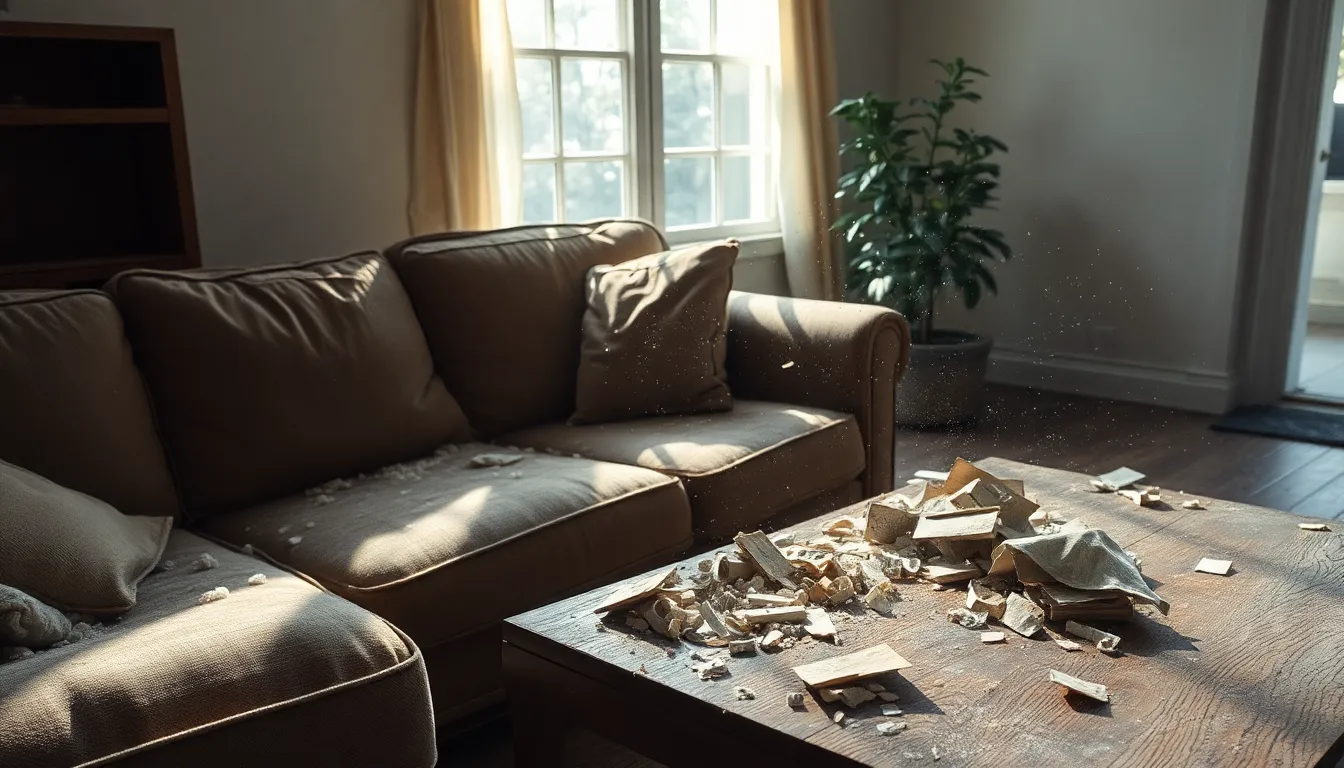In the realm of real estate, cleanliness not only enhances aesthetic appeal but also plays a crucial role in the overall health and safety of a home. Dust and debris are often overlooked elements that can significantly affect property value, the selling process, and even the well-being of potential occupants. As potential homebuyers assess a property, understanding the implications of dust and debris is vital for homeowners, sellers, and realty professionals alike. This article delves into the multifaceted world of dust and debris in real estate, exploring its sources, health risks, effective cleaning strategies, and best practices for maintaining a pristine environment.
Table of Contents
ToggleWhat Is Dust And Debris In Real Estate?

Dust and debris refer to small particles and waste that accumulate in living spaces. Dust is primarily composed of tiny particles including skin cells, fabric fibers, pollen, and microscopic pollutants. Debris, on the other hand, encompasses larger items such as broken furniture, packaging materials, and construction remnants. In real estate, the presence of both dust and debris can act as a red flag for buyers, indicating poor maintenance practices and possible underlying issues with the property. Understanding these elements is essential for homeowners and realtors aiming to create an inviting and healthy atmosphere.
Sources Of Dust And Debris In Home Sales
Several sources contribute to the accumulation of dust and debris in homes:
- Construction and Renovation: Homes undergoing renovations often experience significant dust and debris, including drywall particles, sawdust, and leftover materials. This can create a challenging environment for potential buyers.
- Everyday Living: Daily activities, such as cooking, cleaning, and even pets, generate dust and debris. Pet hair, dander, food particles, and dirt tracked in from outside can quickly accumulate and lead to unappealing conditions.
- Seasonal Changes: Different seasons bring unique challenges. For instance, fall often leads to an influx of leaves and pollen, while winter can bring in additional dust from heated air systems.
- Neglect: A lack of routine cleaning and maintenance can lead to dust buildup, making the property less attractive and potentially affecting indoor air quality.
Health Risks Associated With Dust And Debris
The presence of dust and debris in a home can pose various health risks for occupants.
- Allergies and Respiratory Issues: Dust often contains allergens such as mold spores and pet dander, which can trigger allergic reactions and exacerbate respiratory conditions like asthma.
- Infections and Illnesses: Dust can harbor bacteria, viruses, and fungi, increasing the risk of illnesses among occupants. Poor air quality can lead to headaches, fatigue, and other symptoms commonly associated with sick building syndrome.
- Long-term Effects: Prolonged exposure to high levels of dust and debris can even lead to chronic health issues. In some cases, managing these risks starts with ensuring proper ventilation and cleanliness in the home, which can positively impact the quality of life for residents.
Cleaning Strategies For Homeowners And Realtors
Effective cleaning strategies are essential for homeowners and realtors alike, especially when preparing a property for sale. Here are some key strategies:
1. Conduct Regular Deep Cleans:
- Schedule regular deep cleans to address dust and debris buildup. This includes cleaning carpets, upholstery, and hard-to-reach areas like behind appliances.
2. Invest in Quality Air Filters:
- Using high-quality air filters in HVAC systems can help reduce dust circulation throughout the home. Regularly replacing these filters is crucial for optimal performance.
3. Carry out a Cleaning Schedule:
- A consistent cleaning schedule can help manage dust levels. Assign specific tasks for daily, weekly, and monthly cleaning to ensure thorough maintenance.
4. Use Proper Supplies:
- Use microfiber cloths and vacuum cleaners with HEPA filters to effectively trap dust particles rather than dispersing them into the air.
Best Practices For Maintaining A Debris-Free Environment
To maintain a debris-free environment, homeowners and realtors should follow these best practices:
- Encouraging a No-Shoes Policy: Instituting a no-shoes policy can significantly reduce dirt and debris tracked into the home.
- Regular Landscape Maintenance: For homes with yards, regular lawn care can prevent leaves and other debris from accumulating around the property.
- Organizing Spaces: Keeping storage areas tidy and organized can reduce clutter and prevent debris from accumulating. This includes using bins or cabinets to store less frequently used items.
- Educating Residents: Informing residents about the importance of cleanliness and maintenance can foster a culture of respect for the living environment, eventually enhancing property value.
Conclusion
Dust and debris may seem like minor concerns in the realm of real estate, but they can have significant implications for health, safety, and property value. By understanding their sources, associated health risks, and effective cleaning strategies, homeowners and realtors can create a more appealing and healthy living environment. Adopting best practices to maintain cleanliness can enhance the overall buying experience and contribute to a more sustainable market. This proactive approach not only benefits current residents but also makes properties more attractive to potential buyers in an increasingly competitive market.






